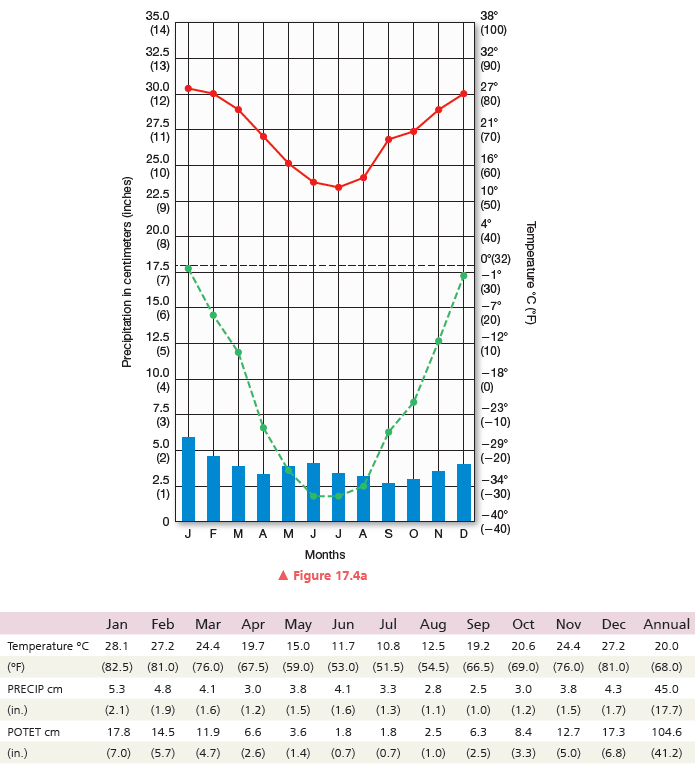Walking along the woods, a student spot a lizard that quickly runs under some leaves that are resting on the forest floor. Looking under the leaves to find the lizard, he notices that the soil is very moist despite several days without rain
This moist soil layer under the leaves is a result of A) humus with a high water-holding capacity and reduced evaporative loss in the O horizon.
B) sand with a high water-holding capacity with water supplied from the B and E horizon.
C) low infiltration and high evaporative loss in the B horizon.
D) a low water-holding capacity of the lower soil layers and high evaporation through the top soil layers.
A
You might also like to view...
Annual temperature range:

A tornado blows walls from homes. The likely EF categorization of the tornado producing this damage is
A) EF1. B) EF2. C) EF3. D) EF4.
A land cover raster is most likely a(n) ________ raster:
A. integer B. floating point
Future world population increase is likely. Which of the following is likely to become an issue?
A. Demand for energy will decrease. B. There will be a greater impact on non-human organisms. C. Food and other raw materials will cease to be a problem. D. Living conditions will improve.